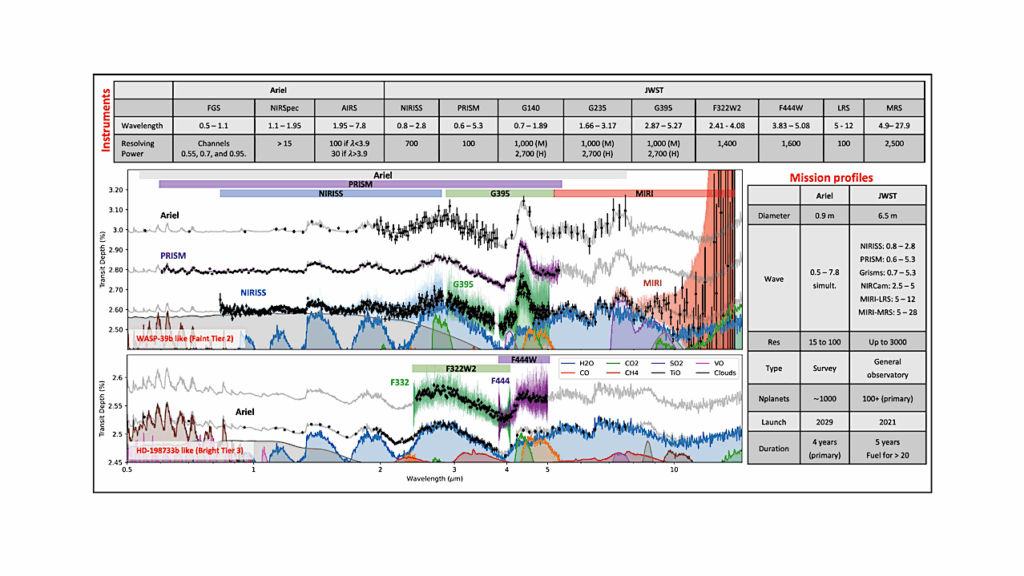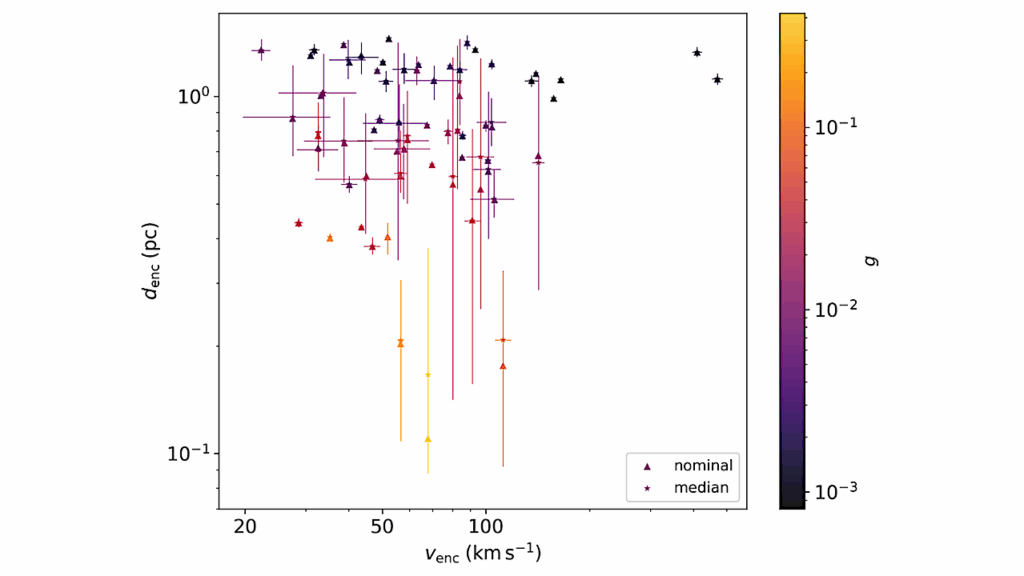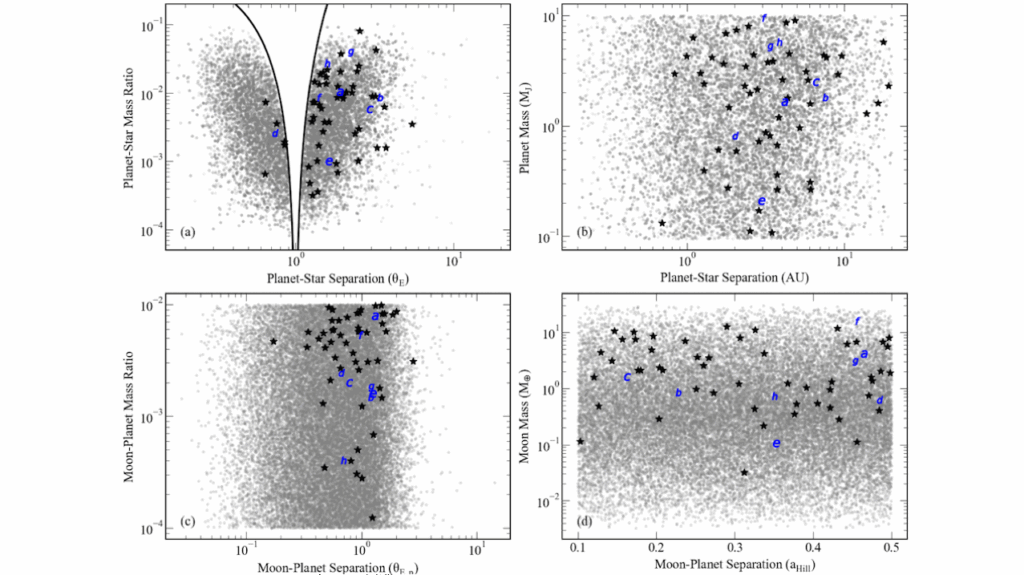Early Release Science Of The Exoplanet WASP-39b With JWST NIRISS

Transmission spectroscopy provides insight into the atmospheric properties and consequently the formation history, physics, and chemistry of transiting exoplanets. However, obtaining precise inferences of atmospheric properties from transmission spectra requires simultaneously measuring the strength and shape of multiple spectral absorption features from a wide range of chemical species.
This has been challenging given the precision and wavelength coverage of previous observatories. Here, we present the transmission spectrum of the Saturn-mass exoplanet WASP-39b obtained using the SOSS mode of the NIRISS instrument on the JWST.
This spectrum spans 0.6−2.8μm in wavelength and reveals multiple water absorption bands, the potassium resonance doublet, as well as signatures of clouds. The precision and broad wavelength coverage of NIRISS-SOSS allows us to break model degeneracies between cloud properties and the atmospheric composition of WASP-39b, favoring a heavy element enhancement (“metallicity”) of ∼10−30× the solar value, a sub-solar carbon-to-oxygen (C/O) ratio, and a solar-to-super-solar potassium-to-oxygen (K/O) ratio.
The observations are best explained by wavelength-dependent, non-gray clouds with inhomogeneous coverage of the planet’s terminator.
Adina D. Feinstein, Michael Radica, Luis Welbanks, Catriona Anne Murray, Kazumasa Ohno, Louis-Philippe Coulombe, Néstor Espinoza, Jacob L. Bean, Johanna K. Teske, Björn Benneke, Michael R. Line, Zafar Rustamkulov, Arianna Saba, Angelos Tsiaras, Joanna K. Barstow, Jonathan J. Fortney, Peter Gao, Heather A. Knutson, Ryan J. MacDonald, Thomas Mikal-Evans, Benjamin V. Rackham, Jake Taylor, Vivien Parmentier, Natalie M. Batalha, Zachory K. Berta-Thompson, Aarynn L. Carter, Quentin Changeat, Leonardo A. Dos Santos, Neale P. Gibson, Jayesh M Goyal, Laura Kreidberg, Mercedes López-Morales, Joshua D Lothringer, Yamila Miguel, Karan Molaverdikhani, Sarah E. Moran, Giuseppe Morello, Sagnick Mukherjee, David K. Sing, Kevin B. Stevenson, Hannah R. Wakeford, Eva-Maria Ahrer, Munazza K. Alam, Lili Alderson, Natalie H. Allen, Natasha E. Batalha, Taylor J. Bell, Jasmina Blecic, Jonathan Brande, Claudio Caceres, S. L. Casewell, Katy L. Chubb, Ian J.M. Crossfield, Nicolas Crouzet, Patricio E. Cubillos, Leen Decin, Jean-Michel Désert, Joseph Harrington, Kevin Heng, Thomas Henning, Nicolas Iro, Eliza M.-R. Kempton, Sarah Kendrew, James Kirk, Jessica Krick, Pierre-Olivier Lagage, Monika Lendl, Luigi Mancini, Megan Mansfield, E. M. May, N. J. Mayne, Nikolay K. Nikolov, Enric Palle, Dominique J.M. Petit dit de la Roche, Caroline Piaulet, Diana Powell, Seth Redfield, Laura K. Rogers, Michael T. Roman, Pierre-Alexis Roy, Matthew C. Nixon, Everett Schlawin, Xianyu Tan, P. Tremblin, Jake D. Turner, Olivia Venot, William C. Waalkes, Peter J. Wheatley, Xi Zhang
Comments: 48 pages, 12 figures, 2 tables. Under review at Nature
Subjects: Earth and Planetary Astrophysics (astro-ph.EP); Instrumentation and Methods for Astrophysics (astro-ph.IM); Solar and Stellar Astrophysics (astro-ph.SR)
Cite as: arXiv:2211.10493 [astro-ph.EP] (or arXiv:2211.10493v1 [astro-ph.EP] for this version)
Submission history
From: Adina Feinstein
[v1] Fri, 18 Nov 2022 20:01:34 UTC (7,388 KB)
https://arxiv.org/abs/2211.10493
Astrobiology,








